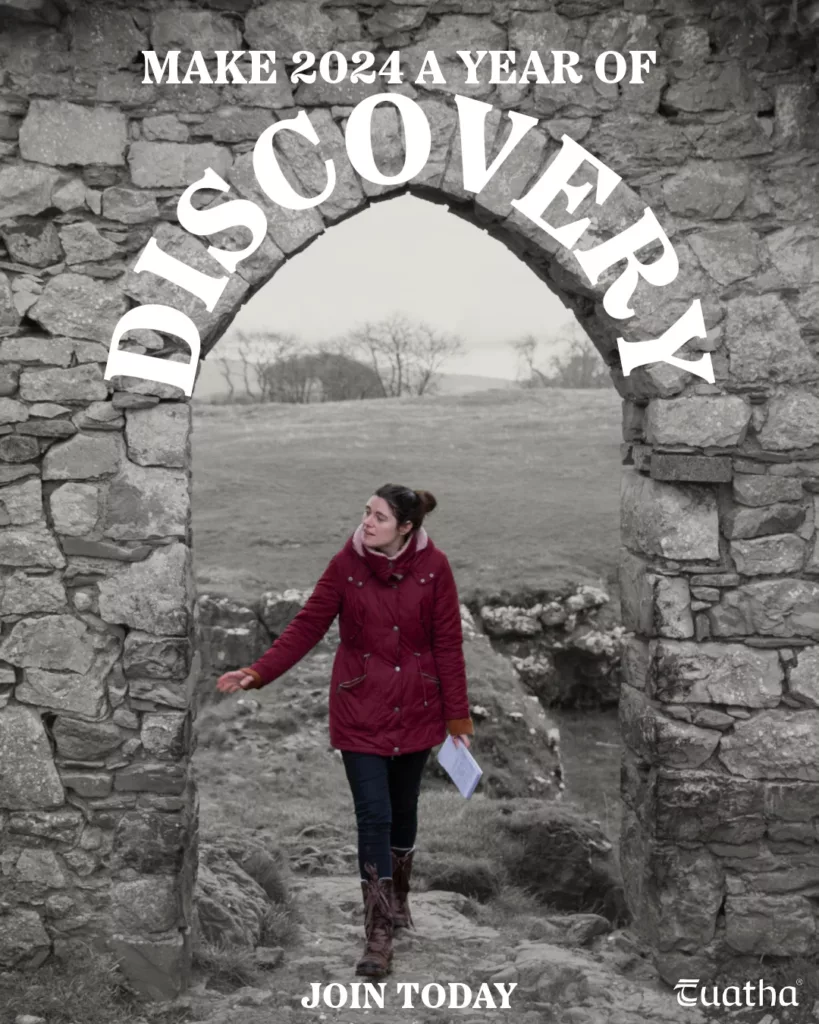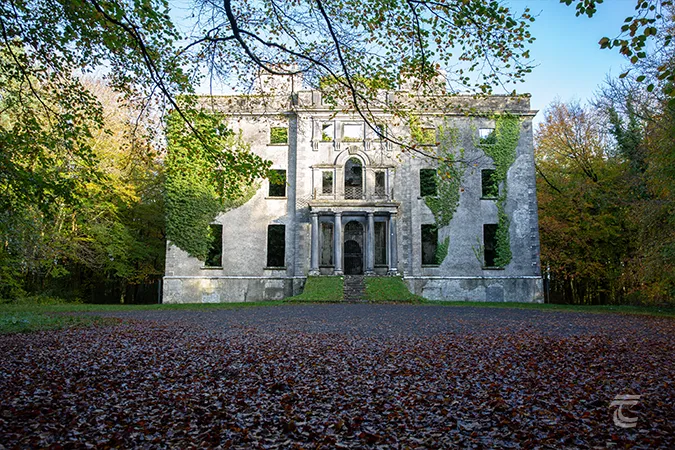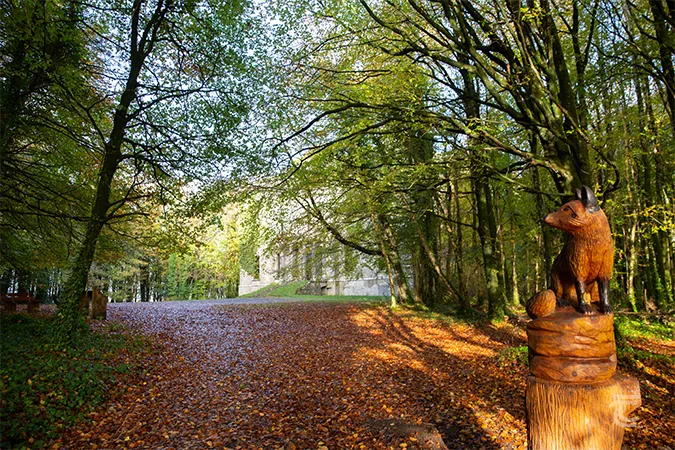Moore Hall
Moore Hall is a truly beautiful place, hidden away on the shores of Lough Carra in County Mayo. The house is believed to have been designed by the architect John Roberts some time between 1792 and 1800. It was built for George Moore, a wine-merchant and entrepreneur. He became wealthy through the wine and brandy trade in Alicante, Spain, after leaving Ireland during the harsh years of the Penal Laws. When those laws were relaxed at the end of the 18th century, George Moore returned to Ireland where he used his wealth to purchase a large estate of some 12,000 acres, and commissioned this elegant house to be his home. The house was designed in a symmetrical neo-Classical style. If you look above the windows in the central projecting part of the front (directly up near the top from the colonnaded doorway), you can see an inscription with the family motto – FORTIS CADERE NON POTEST – A Brave Man May Fall But Cannot Yield.
The interior of Moore Hall had 35 rooms over three storeys. It housed a fine oak-panelled dining room, an elegant drawing room decorated to neo-Classical taste with delicate Italianate plasterwork, and a summer drawing room with large windows that overlooked the calm waters of Lough Carra. The house had a nursery and private chapel, wine cellars, servants quarters and a tunnel that discreetly connected the house to the kitchen garden and farmyard. The Moores of Moore Hall also invested in an extensive library, full of rare and important books, including a manuscript copy of the Annals of the Four Masters. Sadly, all of this would be lost a little over a century later.
Today Moore Hall is a wonderful and atmospheric spot to enjoy a walk and a picnic. The local community have been working with stakeholders like Mayo County Council and the National Parks and Wildlife Service to bring life back to this wonderful place. They have raised funding for the conservation of features like the walled garden, as well as establishing new trails and interpretation around the grounds, and facilities like a carpark, toilets and a small playground. Making it an even more rewarding place to visit for all the family.
For the story of the Moore family, and how this elegant house became a hollow ruin, please continue reading below.
For practical information about visiting this site Click Here
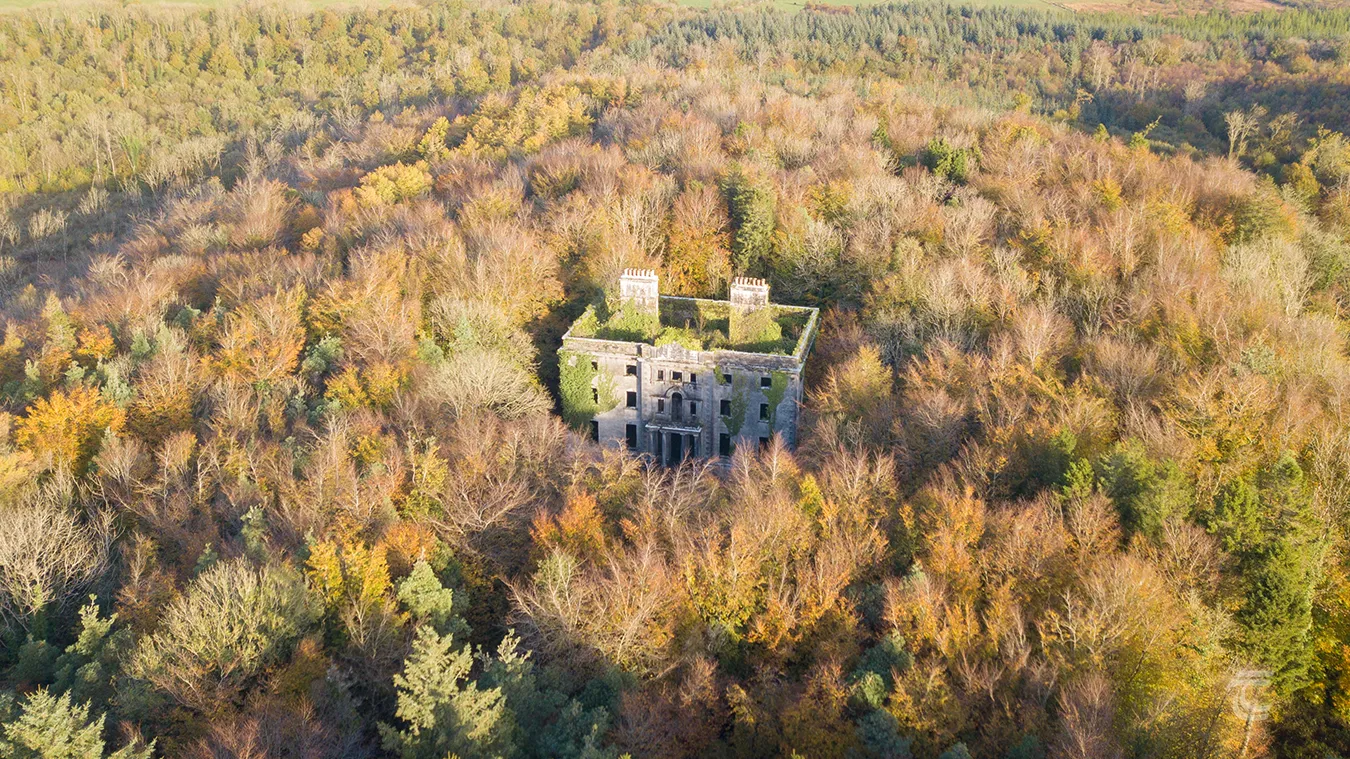
Aerial view of Moore Hall • Mayo
The Moores of Moore Hall
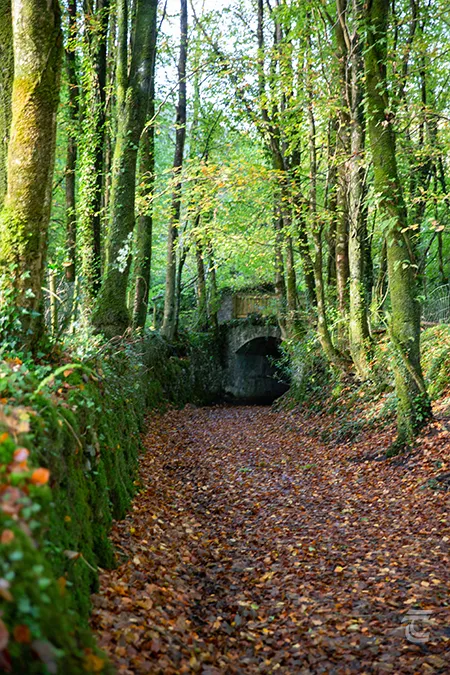
The path leading to the servant’s tunnel • Moore Hall
George Moore died in 1799. His son, John Moore, was deeply involved in national politics. During the uprisings against English rule in 1798, General Humbert landed at Killala to aid the Irish cause with an expeditionary force of French troops on Thursday 23th August 1798. Unfortunately for Humbert, by this time the main action of the 1798 Rebellion had already been fought and lost at Vinegar Hill in County Wexford. Despite this, Humbert’s expedition had some initial success, as they routed a 6,000-strong British and Protestant loyalist militia army in the Battle of Castlebar, causing them to flee in such panic that the event would become famously known as the Castlebar Races. Following the battle, John Moore was appointed President of the Connacht Republic by Humbert. Buoyed by this success, the small force marched towards Dublin only to be comprehensively defeated by an overwhelming force at the Battle of Ballinamuck in County Longford. The defeated French officers were taken as prisoners of war to Dublin to be exchanged for British officers. The Irish, however, were not so fortunate. General Lake ordered many of them to be executed as he considered them to be British citizens, and therefore traitors. John Moore was arrested in Castlebar. He was sentenced to transportation, but died en route in Waterford City.
George Moore inherited the lands after his father’s death. His son, George Henry Moore, was a politician, landowner, and horse-trainer. He was a notorious gambler, but he also travelled extensively across Russia, Syria, and Palestine. After he inherited in 1840, he returned to the family home on the shores of Lough Carra, where he and his brother, Augustus, established a successful race horse stable, winning back much of the wealth that he had previously lost in his younger more feckless years. During the height of the Great Famine in 1846, he entered his horse Coranna in the Chester Gold Cup and won the huge sum at the time of £17,000. He used that money to give every one of his tenants a cow, he also chaired two committees to dispense relief aid in Mayo and imported 1,000 tons of flour, distributing it to tenants at half-cost. After Augustus died during a race, George Henry Moore cut down on his gambling and sold his horses. He was politically active, serving as a Member of Parliament, and taking up the cause of the Tenant League. This led him to become unpopular with his peers, and he lost his seat in 1852. He was also associated with the Irish Republican Brotherhood, and maintained a keen interest and passion for Irish independence until his death in 1870.

The path leading to the servant’s tunnel • Moore Hall
Following George Henry Moore’s death, Moore Hall passed to his eldest son George Augustus Moore. He became a well-known novelist and critic, and he was a contemporary and friend of WB Yeats. Through Yeats’ influence, he became an ardent supporter of the Irish Literary Revival, and other cultural causes, including the Gaelic League. At this time, Moore Hall was overseen by George Augustus’s brother, Maurice. The two brothers did not see eye to eye, and this came to a head following the Irish War of Independence. Maurice was on the pro-treaty side, and gave permission to the pro-treaty militia to billet at Moore Hall against George Augustus’s wishes. This led to disaster.
On the evening of the 1st February, 1923, George Augustus was sitting at home, when armed men burst in and demanded the keys to Moore Hall. He wrote a powerful account of what happened next:
…I had no option but to give up the keys, and suspecting what was on I pointed out to the leader that the house was not Colonel Moore’s property. This had no effect. I sat up all night, hoping that when all would be clear I could save even a portion of the library. At four o’clock I heard four loud explosions. At five I went to the place and found the whole house a seething mass of flames. I at once saw that all was hopeless… I could do nothing but stand by and await the end with the same feelings that one has when standing by the open grave of a very dear friend…
The intense heat of the fire transformed Moore Hall into the roofless ruin that we see today. Nothing of the interior, or its once wonderful library, could be saved. George Augustus Moore received compensation from the Irish Free State of £7,000. He later sold a large part of the estates to the Irish land commission. When he died in 1933, he left an estate valued at £80,000 but did not leave any of it to his brother, from whom he was now long estranged.
Upper left: the front edifice of the ruined house • Lower left: the trails are animated with lovely wooden sculpture • Right: enjoying the trails around Moore Hall
Top: the front edifice of the ruined house • Middle: enjoying the trails around Moore Hall • Bottom: the trails are animated with lovely wooden sculpture of the resident animals
Moore Hall Visitor Information
Moore Hall is a truly beautiful place, hidden away on the shores of Lough Carra in County Mayo.

